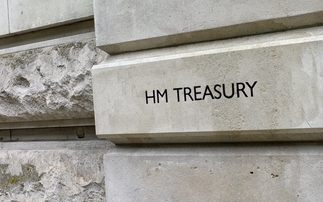Fixed income managers explain their portfolio positioning following a volatile half year, and how they are taking advantage of opportunities in the sector while negotiating challenges including political uncertainty and 'lower for longer' bond yields.
Jeffrey Mueller, portfolio manager, global high yield, Eaton Vance
Political risk
The biggest risk to watch out for in the second half of this year is political uncertainty. US presidential elections, the fall-out from Brexit, and the threat of further yuan devaluation could drive volatility in commodity and other risk assets.
Volatility could lead to outflows and, if sustained, a deterioration in the availability in credit. A combination of stressed corporate fundamentals and a lack of credit will ultimately drive defaults upward, but we do not expect to see this in the short term.
The biggest opportunity for high yield investors remains outside the commodity sectors, where default rates continue to track below 1% (well below the historical average of circa 4%), but valuations, despite a strong rally, are still near their long-term averages.
The forecast backdrop of positive but slow growth in the US economy, coupled with continued easy central bank policy, should continue to drive demand and keep defaults in these sectors contained for the rest of 2016.
While increasingly fragile corporate fundamentals inform our relatively conservative positioning within the strategy, credit risk premium is one of the only traditional risk factors that still offer value to investors, making high yield an attractive asset class in a low-yield world.
Donald Phillips, manager, Baillie Gifford High Yield Bond fund
Brexit concerns
We construct the portfolio on a long term, bottom-up basis and do not position based on the market outlook for the rest of the year.
Despite credit markets shrugging off Brexit, we think this remains a key area of uncertainty going into the second half of the year and beyond. We believe the economic and political uncertainty created by Brexit is a problem for Europe as a whole and not only the UK.
In the aftermath of the vote, we have not made any material changes to the portfolio, though we are actively considering our more economically cyclical holdings, alongside those bond issuers who have relatively near-term debt maturities to deal with.
In both regards, we believe the portfolio is currently well positioned from a risk perspective.
Chanchal Samadder, head of ETFs UK & Ireland, Lyxor Asset Management
Safe-havens
Markets are still trying to make sense of the Brexit aftermath, but one thing is apparent: investors are bracing themselves for uncertainty, and sentiment is negative.
This type of environment is conducive to safe-haven assets, in particular government bonds such as US treasuries and UK gilts. ETF investors have the benefit of gaining precise exposure to such assets across a range of different maturity buckets.
Another area or recourse that has been popular in 2016, and may continue to be so, is credit. In Europe in particular, corporate bond ETFs could be of interest due to the attractive yield pickup and ongoing ECB monetary policy supporting euro corporate debt.
There may be opportunities in inflation-linked instruments. There has been a consistent trend of positive flows into inflation-linked bond ETFs since October 2015, with over $2bn in 2016 alone.
These range from traditional linkers such as inflation-linked gilt ETFs and Treasury Inflation-Protected Securities (TIPS) ETFs, to more innovative inflation expectations ETFs that aim to match the inflation breakeven rate. One reason behind these strong flows is that inflation expectations are on the rise, both in Europe and the US.














